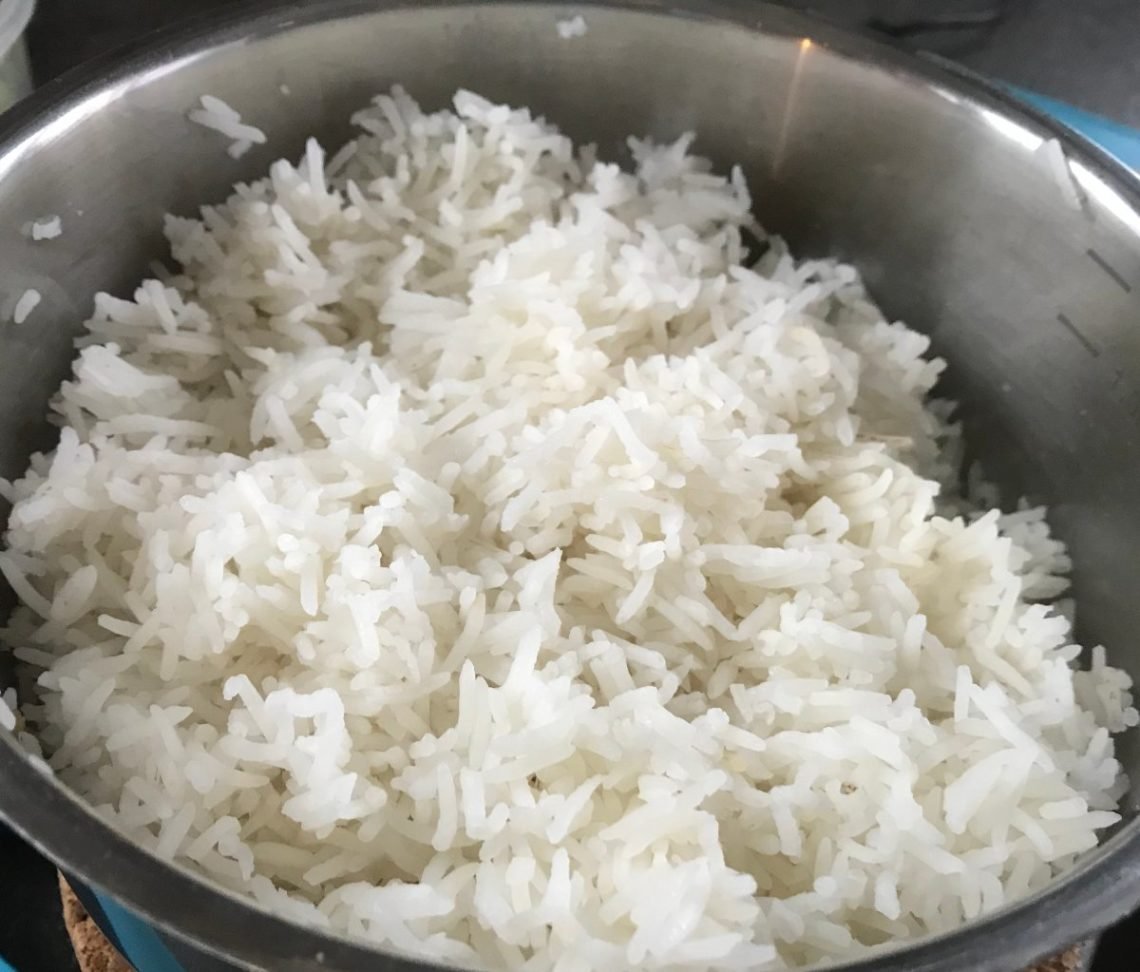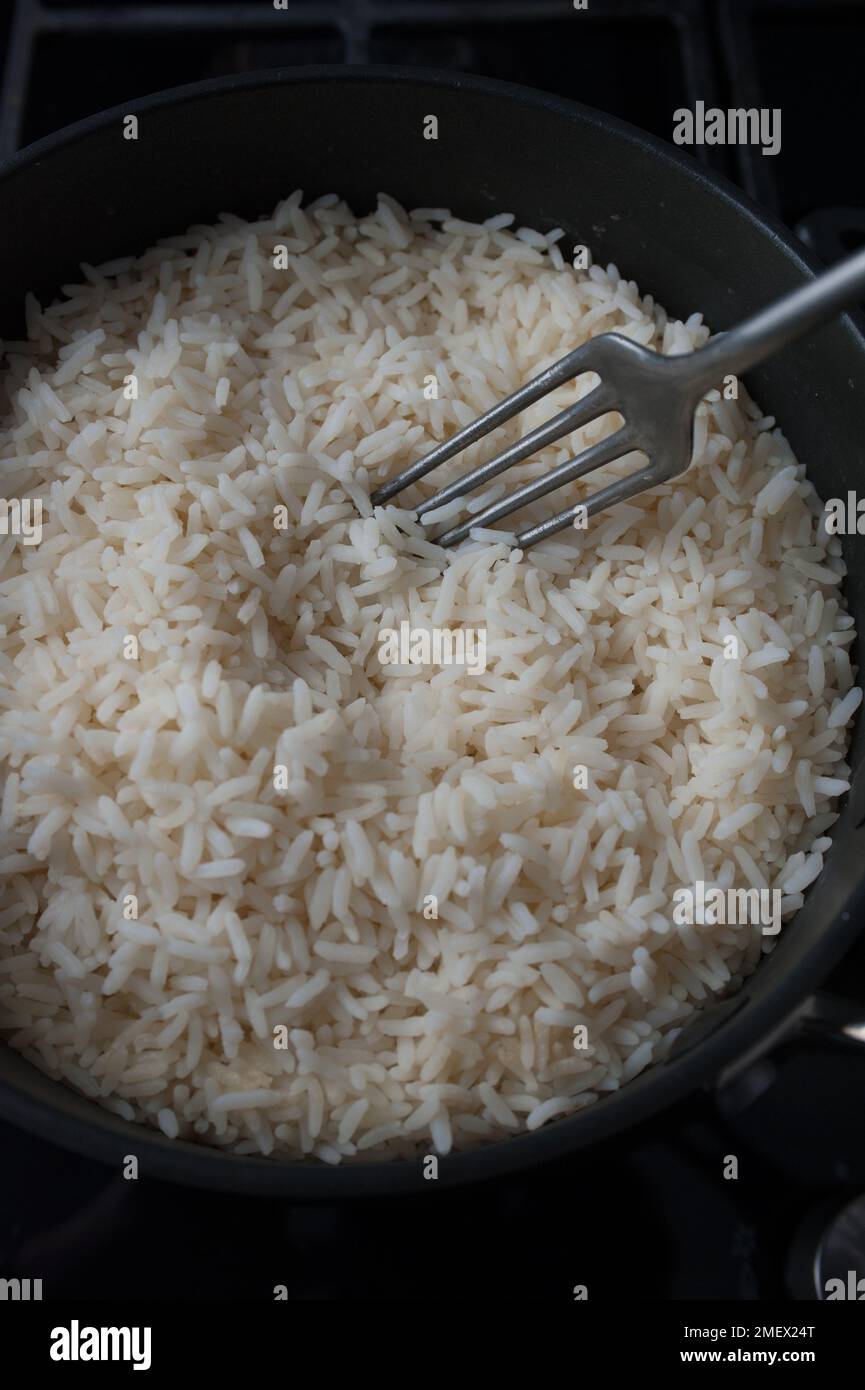Who doesn’t love perfectly cooked rice, right? But let’s face it—sometimes that rice just clumps up or turns out sticky when all you want is light, fluffy grains. Well, my friend, you’re about to discover the secret weapon that’s been hiding in your cutlery drawer this whole time: your trusty fork. Yep, fluffing rice with a fork is the game-changer you’ve been missing. Whether you’re cooking for a family dinner or prepping for a big event, mastering this technique will take your rice game to the next level.
Now, before we dive into the nitty-gritty of how to fluff rice with a fork, let’s talk about why it matters. Think about it—no one wants to serve up rice that looks like it’s been glued together. Fluffy rice not only looks better but also tastes better. It’s lighter, more airy, and just plain delicious. Plus, it’s a skill that’s easy to master, even if you’re a total kitchen rookie.
So, grab your favorite fork and let’s get started. By the end of this guide, you’ll be a rice-fluffing pro, ready to impress anyone who sits at your dinner table. Let’s make this happen!
Read also:Cree Summer And Kadeem Hardison The Dynamic Duo You Didnrsquot Know You Needed
Table of Contents
- Why Fluff Rice with a Fork?
- Tools You’ll Need
- Step-by-Step Guide to Fluffing Rice
- Common Mistakes to Avoid
- Best Types of Rice for Fluffing
- Pro Tips for Fluffier Rice
- The Science Behind Fluffy Rice
- Different Ways to Fluff Rice
- Frequently Asked Questions
- Wrapping It Up
Why Fluff Rice with a Fork?
Alright, let’s get down to business. Why should you even bother fluffing your rice? Well, fluffing rice is all about separating those sticky little grains so they don’t clump together. When you cook rice, the starches inside the grains start to gelatinize, which can make the rice stick together. Fluffing breaks up those clumps and gives you that perfect, light texture.
Using a fork might sound simple, but it’s actually a genius move. Forks are designed with prongs that are perfect for separating grains without crushing them. Unlike a spoon, which can mash the rice, a fork gently lifts and separates each grain, leaving you with perfectly fluffy rice every single time.
Benefits of Fluffing Rice
- Improves texture and presentation
- Reduces clumping and stickiness
- Enhances the overall flavor of the dish
- Makes serving easier and more elegant
Tools You’ll Need
Before you start fluffing, make sure you have the right tools. You don’t need anything fancy—just a few basic kitchen items:
- A good-quality fork (preferably stainless steel)
- A pot or pan with a lid for cooking
- A spatula or wooden spoon for stirring
- Your favorite type of rice
Oh, and let’s not forget the most important tool of all: your patience. Rice takes time to cook, and rushing the process can ruin the texture. So, take a deep breath, grab your fork, and let’s get cooking!
Step-by-Step Guide to Fluffing Rice
Ready to learn the magic of fluffing rice with a fork? Follow these simple steps, and you’ll be serving up restaurant-quality rice in no time:
Read also:Is Leslie Jones Married Unveiling The Personal Life Of A Comedy Icon
Step 1: Rinse Your Rice
First things first—rinse your rice under cold water. This removes excess starch and helps prevent clumping. Drain the water thoroughly before moving on to the next step.
Step 2: Cook Your Rice
Now, it’s time to cook your rice. Use the recommended water-to-rice ratio (usually 2:1) and bring it to a boil. Once it’s boiling, reduce the heat to low, cover the pot, and let it simmer until the rice is cooked through.
Step 3: Let It Rest
Here’s a pro tip: let the rice rest for 5-10 minutes after cooking. This allows the steam to distribute evenly, giving you a better texture. Don’t skip this step—it’s crucial!
Step 4: Fluff with a Fork
Finally, the moment you’ve been waiting for—fluffing the rice. Gently insert your fork into the rice and lift the grains upward. This separates the grains and releases any trapped steam. Keep going until all the rice is fluffy and light.
Common Mistakes to Avoid
Even the best cooks make mistakes sometimes. Here are a few common pitfalls to watch out for when fluffing rice:
- Over-stirring the rice while cooking
- Not letting the rice rest before fluffing
- Using too much water, which can make the rice mushy
- Fluffing too aggressively, which can break the grains
By avoiding these mistakes, you’ll ensure your rice turns out perfect every time. Trust me, it’s worth the extra effort!
Best Types of Rice for Fluffing
Not all rice is created equal, and some types are better suited for fluffing than others. Here are a few of my favorites:
- Basmati: Long-grain rice with a nutty flavor
- Jasmine: Fragrant, slightly sticky rice from Thailand
- Wild Rice: Nutty and earthy, perfect for salads
- Arborio: Short-grain rice ideal for risottos
Experiment with different types of rice to find your favorite. Each variety has its own unique flavor and texture, so don’t be afraid to try something new!
Pro Tips for Fluffier Rice
Want to take your rice game to the next level? Here are a few tips and tricks to help you achieve perfectly fluffy rice every time:
- Add a pinch of salt to the water for extra flavor
- Use a splash of oil or butter to prevent sticking
- Let the rice sit for a few minutes after fluffing to settle
- Store leftover rice in an airtight container to keep it fresh
These little tweaks might seem small, but they can make a big difference in the final result. Give them a try and see for yourself!
The Science Behind Fluffy Rice
Okay, let’s get nerdy for a second. Have you ever wondered why fluffing rice works so well? It all comes down to science. When rice is cooked, the starches inside the grains absorb water and swell. If you don’t separate the grains after cooking, they can stick together, creating clumps.
Fluffing with a fork breaks up those clumps by gently lifting and separating each grain. This releases any trapped steam and allows the rice to cool evenly, resulting in that perfect, light texture we all crave.
Different Ways to Fluff Rice
While fluffing with a fork is the most common method, there are other ways to achieve fluffy rice. Here are a few alternatives:
Using a Wooden Spoon
A wooden spoon can be a great alternative if you don’t have a fork handy. Simply stir the rice gently to separate the grains. Just be careful not to mash the rice—it’s a delicate balance!
Using a Rice Paddle
If you have a rice cooker, chances are it came with a paddle. This tool is specifically designed for fluffing rice and can make the process even easier.
Frequently Asked Questions
Got questions? Here are some of the most common ones I get about fluffing rice:
Q: Can I use any type of fork?
A: Any fork will work, but a stainless steel fork with long, thin prongs is ideal for fluffing rice.
Q: How long should I let the rice rest?
A: Let the rice rest for at least 5-10 minutes after cooking to allow the steam to distribute evenly.
Q: What happens if I don’t fluff the rice?
A: If you don’t fluff the rice, it may turn out clumpy or sticky, which can affect the texture and presentation.
Wrapping It Up
So, there you have it—everything you need to know about how to fluff rice with a fork. From the science behind fluffing to pro tips and tricks, this guide has got you covered. Remember, mastering this technique takes practice, so don’t get discouraged if it doesn’t turn out perfectly the first time.
Now, it’s your turn to put these skills to the test. Grab your fork, fire up the stove, and start cooking some seriously delicious rice. And don’t forget to share your results with us in the comments below—we’d love to hear how it went!
Happy cooking, and here’s to perfectly fluffy rice every single time!


